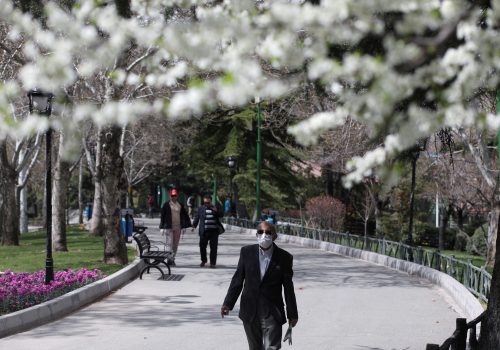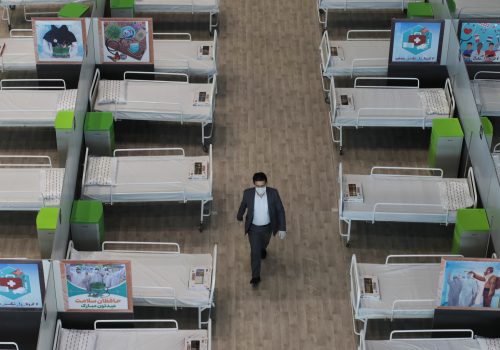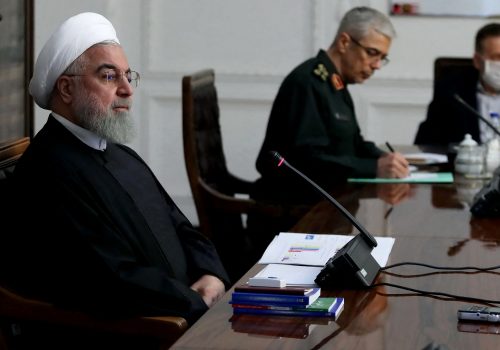COVID-19: The last nail in the coffin of Iran’s tourism industry?
Iran is filled with countless wonders—the ruins of Persepolis, the island of Qeshm, Mount Damavand, Tape Sialk, and the Laton waterfall are only a few of Iran’s many otherworldly sites. Despite the West shunning Iran since the 1979 Islamic Revolution, the country’s landscapes, ancient ruins, mosques, and holy cities have enriched Iran’s tourism industry both before and after 1979.
The Iranian government was, until recently, investing heavily in hundreds of projects in the tourism sector, which was enjoying an annual growth rate of roughly 28 percent. This had made Iran one of the countries with the fastest growing tourism sectors in the world. After the US unilaterally withdrew from the Joint Comprehensive Plan of Action (JCPOA) in May 2018 and imposed stringent sanctions on Tehran’s oil industry and auto manufacturing, tourism became a lifeline for the country’s economy.
Thus, the coronavirus pandemic, which has decimated the travel and hospitality sector worldwide, has come at a particularly inopportune time for Iran. Even before the virus spread to Iran in early 2020, rising tensions between Tehran and Washington—which spiked with the US assassination of Quds Force commander Qasem Soleimani—dissuaded many foreigners from visiting the country.
Domestic tourism remained vibrant, however, in part, because the collapse of Iran’s currency made foreign travel prohibitively expensive. However, COVID-19, which has hit Iran harder than any other Middle Eastern country, caused many Iranians to stay home and cancel their domestic trips during the normally busy season of Nowruz, the Iranian New Year. Furthermore, Shia Muslims in neighboring countries such as Afghanistan, Bahrain, and Iraq, who normally make trips to holy Iranian cities or come to Iran for medical care, are not entering the country because of the outbreak.
An Iranian source, who has deep insight into Iran’s tourism sector but asked to remain anonymous, said that “COVID-19 put the last nail in the coffin” of the industry.
To better cope with the coronavirus, authorities in Iran closed monuments such as Kashan’s ancient Tape Sialk site. Travel cancelations predictably left Iran’s hotels deserted in March, when the country was supposed to enjoy its two-week Nowruz holiday, which is a period usually busy with family gatherings, tourism, and rituals.
After the outbreak of the coronavirus in Iran, the president of Shiraz’s Association of Hotel Owners warned that hotels and travel agencies would go bankrupt without any assistance from the Iranian government during this difficult period. As the source who spoke to this author explained, Iranian hotels that opened five or six decades ago are now empty for the first time. He explained that, even amid the 1980-88 Iran-Iraq war, these hotels were “minimally operational” but not deserted as they are today.
It is important to note that, early on during the coronavirus outbreak in Iran, the Iranian government was slow to take actions that restricted domestic travel. With an economy that was growing more dependent on domestic business, as US-imposed sanctions were cutting Iran off from many global markets, Iranian officials were fearful of the economic consequences of such restrictions. By trying to keep the domestic tourism sector alive, even after Iranian medical experts sounded the alarm over the pandemic, Iranian officials bear a significant degree of responsibility for how quickly COVID-19 spread across all of the country’s provinces.
Now, that Iran’s government has taken actions to temporarily bring the country’s domestic tourism industry to a halt, there are concerns about when or whether this sector can recover. Theoretically, a government bailout could keep the industry alive, but the government is, apparently, not planning on giving the tourism sector a boost because they are not in a fiscal position to save such industries. Consequently, many companies will go into the red assuming they do not completely collapse.
That the Islamic Republic’s leadership recently made their first ever request to the International Monetary Fund (IMF)—they asked for a $5 billion emergency package to help deal with COVID-19—speaks volumes about the magnitude of Iran’s economic crisis. Under US law, the Trump administration is obliged to vote against such assistance because Iran is on the State Department’s list of terrorism sponsors. It is unclear, as of this writing, whether other key members of the IMF will support the loan and override a negative US vote.
Ultimately, countries can have vibrant international and domestic tourism industries only after they achieve certain levels of stability and security that leave visitors feeling safe. Today, that is not possible for Iran. Looking ahead, it is not clear how quickly Iran’s tourism industry could make a comeback after a vaccine is developed to combat the coronavirus.
The most optimistic assessment would conclude that, because of Iran’s natural beauty, diverse archeological sites, rich culture rooted in ancient history, and the Iranian people’s reputation as hospitable hosts, the crisis in the country’s tourism sector will be temporary. Much as Turkey’s tourism sector rebounded following the failed coup plot of July 15, 2016 and several Islamic State of Iraq and al-Sham (ISIS) terrorist attacks, this industry in Iran could potentially regenerate. Nonetheless, nothing is guaranteed and while global tourism is suffering worldwide amid this terrifying pandemic, Iranians dependent on tourism will continue to suffer for the foreseeable future.
Giorgio Cafiero is the CEO of Gulf State Analytics, a Washington, DC-based geopolitical risk consultancy. Follow him on Twitter: @GiorgioCafiero.
Image: Remains of the ancient city of Persepolis, Shiraz, Iran, December 01, 2016 (Reuters)


